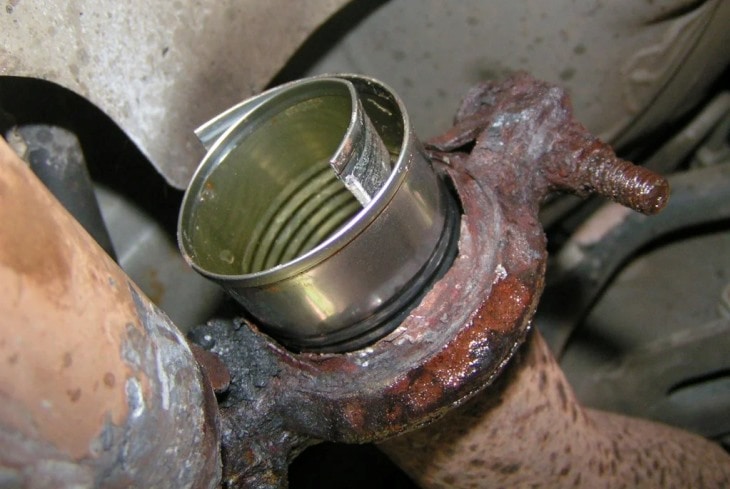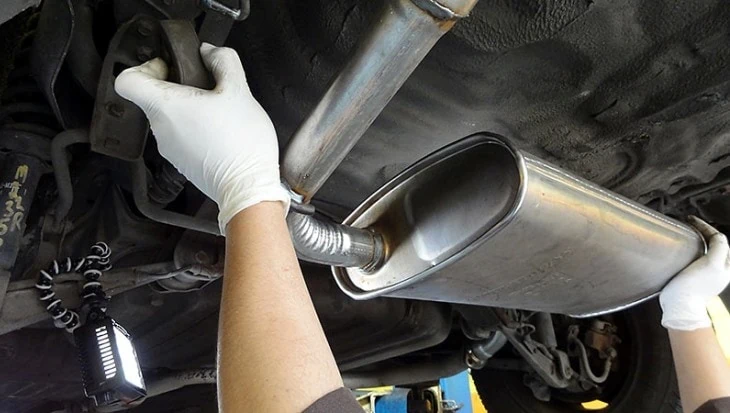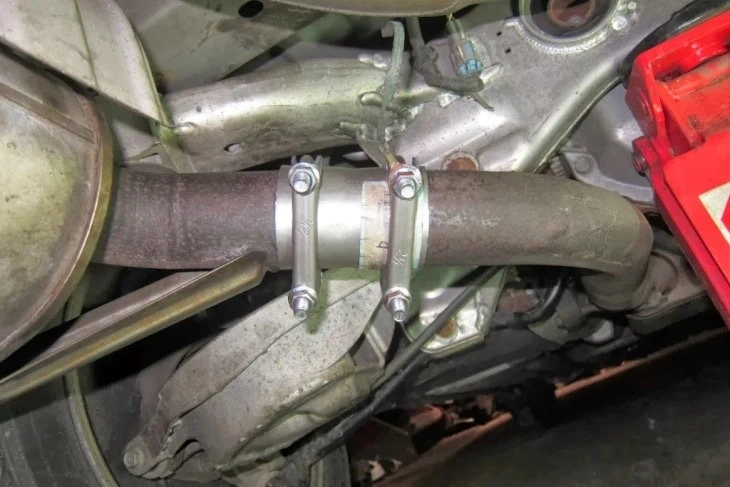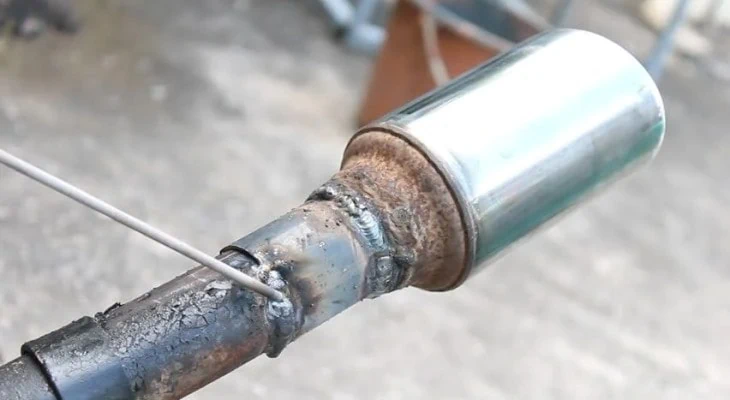If your car is suddenly making a lot of noise, it may be due to a problem with your exhaust system. Loud muffler and exhaust sounds are usually the first sign of a problem with the exhaust. How much will it cost to get the exhaust pipe repaired by a welder?
The average cost to get an exhaust pipe welded and repaired is $306. The final cost could be anywhere from $40-$500, depending on the shop, the size of the vehicle, the amount of damage, and the accessibility of the pipe. If any other parts of the exhaust system need to be repaired or replaced, the price will be higher.
Table of Contents
How Much Does It Cost to Weld the Exhaust?

The average cost to weld and repair an exhaust pipe is $306. However, it could cost anywhere from $40-$500, depending on several factors, including:
- Size of the vehicle
- Amount of damage to the exhaust pipe
- Location and accessibility of the exhaust pipe
- Labor charges and expertise of the mechanic
What Does the Cost Include?
An exhaust system repair is expensive! Just what exactly are you paying for, anyway? It depends on the shop, and the service performed.
Exhaust Repair
Repairing the exhaust pipe involves welding any cracks or weak areas in the pipe system. This requires a welder with the proper equipment.
Exhaust System Replacement

If there is extensive damage to the exhaust pipes, they need to be replaced entirely. Or, one of the other components of the exhaust system may need to be repaired. Repairing or replacing any of these parts will cause the price to be higher.
- Exhaust Manifold – The exhaust manifold collects the exhaust from the cylinders and sends it to one pipe.
- Oxygen Sensor – The oxygen sensor measures how much oxygen is in the exhaust. It then regulates adding more oxygen to the engine, and helps improve gas mileage.
- Catalytic Convertor – The catalytic convertor is a very important part of the exhaust system that converts the dangerous gases produced by the engine into water vapor and carbon dioxide.
- Muffler – The muffler dampens or muffles the noise the exhaust makes as it exits the car. Trust me, you will be able to tell if there is a problem with the muffler. Your car will be much louder!
Labor Fees
A simple exhaust repair shouldn’t take more than one hour, or possible two hours, at most. Most mechanics charge anywhere from $35-$100 per hour for labor. However, if there are any other parts that need to be repaired or replaced, the price will increase.
What is an Exhaust Pipe?
The exhaust pipe is just one piece of a car’s exhaust system. It is the part that allows the exhaust to escape safely outside of the car. It’s attached to the muffler, then goes along the underside of the car. Most exhaust pipes are bracketed to the back of the vehicle.
Can I Repair an Exhaust Pipe Myself?
Welding an exhaust pipe is usually beyond the expertise of most DIY mechanics. Not only do you need welding equipment, but you also need to know how to use it.
Exhaust Pipe Replacement
It is possible to replace the exhaust pipe yourself, however, many vehicles have specifically shaped exhaust pipes. Again, once the pipe is in place, it will most likely need to be welded, which is an obstacle for the home garage mechanic.
Exhaust Repair Without Welding

For small holes, it is possible to patch the exhaust pipe without welding. Once you locate the leak, use a fine grit sandpaper to create a clean, textured surface in order to patch the leak.
Try one of these solutions:
- Reinforced Epoxy – This epoxy is approved for use on vehicles. It is gasoline and heat resistant and waterproof. Mix it at a one-to-one ratio, then apply it to the hole. Allow it to cure for 4-6 hours, then it can be sanded or taped.
- Exhaust Heat Wrap – This heavy-duty tape is made from pulverized lava rock. It’s pliable and can be wrapped around the exhaust pipe to repair leaks and improve performance. This particular heat wrap needs to be wet for application, but other brands have different instructions. Some require a warm or cool exhaust system for application. Make sure to read all instructions thoroughly.
- Exhaust Clamp – This is another simple way to cover a hole. Place the sleeve around the leak, then tighten the bolts.
- Aluminum Patch – An aluminum patch has an adhesive side. Cut the patch to cover the hole. For larger holes, wrap the entire pipe with the patch. You may want to seal the edges with epoxy.
Final Thoughts
Exhaust repairs can be expensive! It all depends on how much repair is required, and if any other parts of the exhaust system need to be repaired or replaced. Don’t ignore a problem with the exhaust system, or you could have dangerous gas leaks and further repairs. Happy driving!

